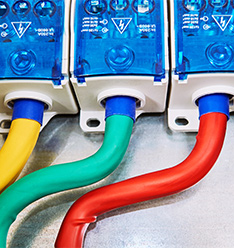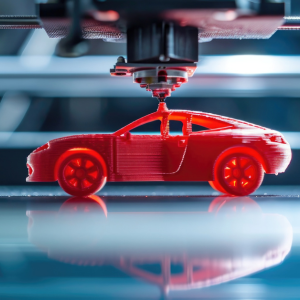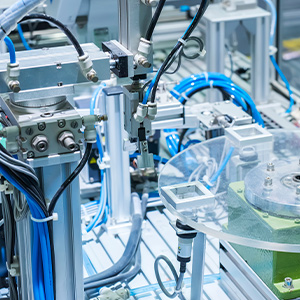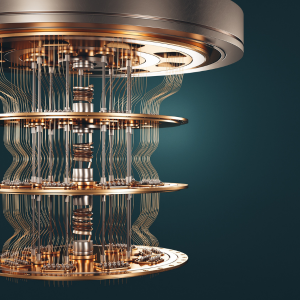Three Phase & Single Phase Explained
Post By: Tom Rowse On: 02-06-2023 - Manufacturing
Most of the electrical energy you come across in daily life comes from an alternating current source. This AC source is the same whether it’s used for domestic appliances, industrial machinery or office equipment. Alternating current indicates a category of electric power in which there are periodic changes in both its direction and magnitude. The “phase” refers to how an electrical load is distributed. It’s one of the features of AC power that it comes in either single phase or three phase form, depending on the application.
If you’re running a lot of electrical appliances, or perhaps if you’re charging an EV battery charging an EV battery, you may have two or more electricity meters. In this case, you’re going to need a three phase supply. To determine what type of domestic supply you need, it’s best that you consult a qualified electrician. They’ll be able to assess what equipment you’re running and figure out how much power you’ll need.
While residential homes mostly operate using a single-phase power supply, most industrial and commercial facilities will typically be using a three-phase supply to better accommodate the higher loads. Heavy loads like industrial equipment require a consistent supply of electrical power, and this requires a three phase system to deliver it.
What Is Single Phase?
So, single phase and three phase are both types of electricity supply, and the difference lies in the amount of power you get. For domestic use, a single phase supply is usually sufficient and many properties have this as standard. It’s smaller, and can run most domestic appliances, provided you have gas central heating.
In a single phase AC power system you’ll see two wires that carry the electrical current. These are the phase wire (sometimes called a line or hot, or live wire) which delivers the current to the load, and the neutral wire which returns it back to its source. Depending on where you live, the voltage is usually 230V, at a frequency of 50 Hertz.

Single phase power supplies are therefore the usual choice when the loads consist of lighting or heating, and don’t have to service large electric motors. It is possible in the EU to convert the voltage from a three-phase system to a single phase system, although in the United States, you’d need a transformer.
An easy way to tell if you have a single or three phase supply is to look at the electrical fuses. A single phase supply will usually have only one fuse, while in a three phase supply you’ll see three 100 Amp fuses.
Advantages of Single Phase
Single phase power is a very common form of supply to most situations with a small power requirement. It’s adequate for most residential supplies and is often simply designed and operated. A single phase supply can usually cope with loads up to 2,500 Watts, depending on the region.
Disadvantages of Single Phase
You can’t run any heavy loads like industrial motors or heavy-duty equipment on a single phase supply. Nor can you start up a small (less than 1kW) single phase motor directly using a single phase supply, because it won’t generate sufficient initial torque to get the motor turning. So, to use a single phase supply for heavier loads, you’d need something like a motor starter or a variable frequency drive to make them work properly.
What Is Three Phase?
In a three phase system, you’ll find three or four wires that transmit the current. If there are only three power wires, all three of them are phase wires, with each power signal being delivered 120° out of phase with the other two. In a three phase system, it is possible to split it into three separate single phase circuits, which is not the same as a direct three phase supply.
If you see a fourth wire in the circuit, that will be a neutral wire, depending on what type of circuit you have. These are typically the star (also called wye or Y) and delta configurations. The delta configuration circuit is the one with only three wires, i.e. there is no neutral wire. This is the configuration used by all high-voltage systems. In the star or wye (Y) configuration, you’ll see the three phase wires plus a neutral wire leading out from the common terminal of the Y circuit). This type of circuit sometimes also has a ground wire.
In a three phase power supply, the voltage generated between any two phases is 415V, and 240V between a phase and neutral. The current goes in cycles of 360°, so that each phase reaches peak voltage twice in one cycle. The main advantage of this is that the power supply is continuous, and never drops out entirely. This constant stream of power, plus the three phase system’s ability to accommodate higher loads, are what makes three phase so well suited to commercial and industrial operations.
Advantages
Some countries, mostly in Europe. offer a three phase residential supply as standard, since we now use so many more electrical appliances in daily life. It’s much easier to run larger loads with this system, so a three phase power supply is most commonly used for commercial and industrial loads. A three phase power supply requires less wire to deliver the same amount of power as a single phase power supply.
Almost all sources of generated power are originally three phase power, which is easy to produce and economical. A three phase power supply offers higher overall efficiency than a single phase power supply when used for the same load. The three phase supply also offers a greater power transfer capability. Industrial three phase motors can start up without requiring a motor starter, since the phase difference is sufficient to generate the initial torque to start up the motor.
Disadvantages
The biggest disadvantage of using a three phase power supply is that the circuit isn’t equipped to handle an overload. If an overload occurs, costly equipment might suffer damage, so there’s a greater risk of incurring expensive repairs.
Also, a three phase power supply will incur high insulation costs, because of the higher unit voltage. Insulation requirements vary according to the amount of voltage, since the size of the wires you need is also dependent on the power distribution.
Single Phase Vs. Three Phase Power
So what’s the essential difference between these two types of power supply? Single phase power consists of alternating current passing through two wires in a power circuit. Usually, this will be configured as one phase or live wire distributing the current to the load, and one neutral wire carrying it back to the source. Three phase power consists of AC passing through three phase wires, and possibly a fourth neutral wire.
One of the most important differences between single phase and three phase power is the consistency of the latter’s delivery. Because alternating current naturally peaks and dips in voltage, these inconsistencies are reflected by peaks and troughs in a single phase power supply. A three phase power supply has the advantage of delivering power at a steady, constant rate, which makes it much better suited to heavy loads.
Three phase power supplies are also able to transmit the power more efficiently than single phase power supplies. A three phase circuit requires only one additional wire (i.e. three wires instead of two) to deliver three times as much power. That means that, whether they have three or four wires, three-phase power supplies need less conductor material to transmit the same quantity of electrical power as single phase power supplies.
A three phase circuit therefore provides greater power density at the same amperage than a single phase circuit, which means wiring size and installation costs will be lower. Three phase power also makes balancing loads a lot easier, minimising the possible distortion in harmonic currents. Reducing these variations in current and voltage obviates the necessity for large neutral wires in the circuit.
Perhaps the most important difference between single phase and three phase power supplies is what happens if there’s an electrical network interruption. If the electrical power is interrupted at source, a single phase connection will lose its power altogether, since it only has the one phase wire. However, in a similar situation, a three phase power supply won’t suffer any power interruption. That’s because if anything happens to cut off the electrical supply to one of its phases, the other two phases will carry on working.
Roles of Power Distribution Systems – and Potential Changes
Both systems of power distribution, whether single phase or three phase, are ideally suitable for their designated roles, even though the two types of configuration are quite different. Most domestic electrical demands are for things like lighting, cooking and refrigeration, audiovisual devices, and chargers. For these purposes, single phase supplies are eminently suitable.
Three phase power is more consistent and efficient, so it’s suited to more demanding applications like industrial machinery. However, since the technological revolution, domestic demands are getting much higher, so three phase power may now also be supplied to newer residences such as smart homes.
Get More From Rowse Straight To Your Inbox




